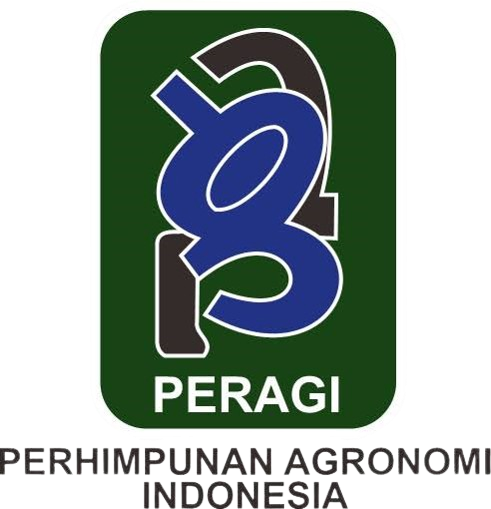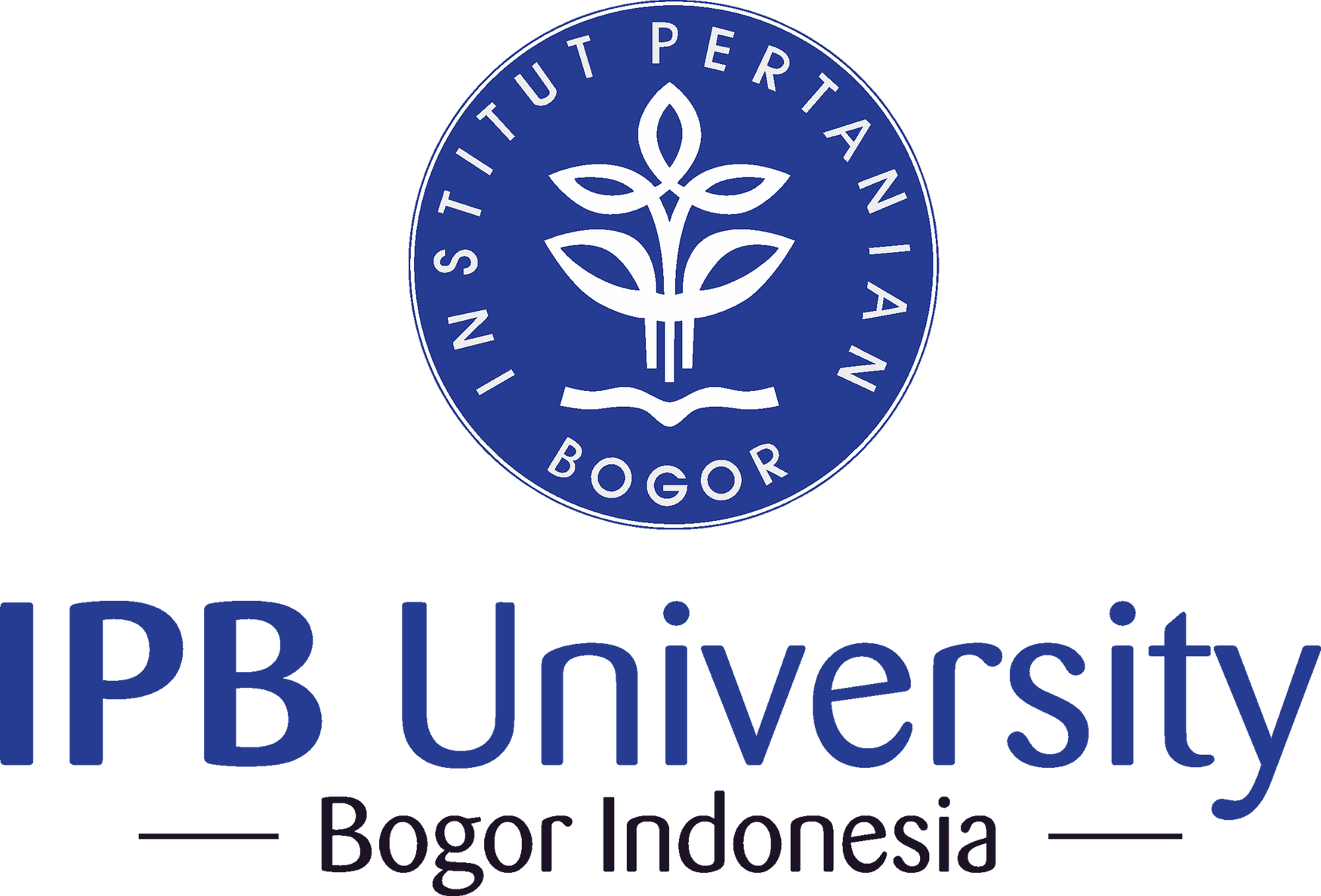Identifikasi Zat Alelopati pada Daun Eucalyptus pellita F. Muell dan Pengaruhnya terhadap Perkecambahan Gulma
Abstract
Pengendalian gulma menggunakan herbisida sintetis lebih efektif dan murah dibandingkan dengan pengendalian manual, namun berisiko menyebabkan pencemaran lingkungan. Daun Eucalyptus pellita mengandung senyawa alelopati yang berpotensi sebagai bioherbisida. Penelitian dilaksanakan di Laboratorium Ecotoxycology, Departemen Agronomi dan Hortikultura, Fakultas Pertanian, Institut Pertanian Bogor. Tujuan dari penelitian ini adalah untuk mengidentifikasi zat alelokimia pada daun Eucalyptus pellita dan mengetahui potensinya sebagai bioherbisida untuk mengendalikan perkecambahan gulma. Senyawa alelokimia ditentukan menggunakan GCMS. Ekstrak daun diaplikasikan pada benih gulma di laboratorium. Percobaan disusun dalam rancangan acak lengkap dengan empat ulangan. Perlakuan konsentrasi ekstrak terdiri dari 0%, 5%, 10%, dan 20% (w/v). Gulma target adalah Asystasia intrusa, Borreria alata, dan Eleusine indica. Hasil penelitian menunjukkan adanya 23 senyawa dalam ekstrak daun E. pellita; senyawa dominannya adalah 1,8 cineole. Ekstrak daun E. pellita menekan perkecambahan benih gulma target. Ekstrak daun E. pellita pada konsentrasi 5%-20% menekan pertumbuhan plumula dan radikula A. intrusa dan B. alata dalam percobaan laboratorium.
Kata kunci: alelokimia, bioherbisida, biomassa, ekstrak daun, perkecambahan
Downloads
References
Ataollahi, R., M. Dejam, S.S. Khaleghi. 2014. Phytotoxic effects of Eucalyptus globulus leaf extract on Solanum nigrum. SouthWestern Journal of Horticulture, Biology and Environment. 5(1):43-53.
da Silva, A.J., W.R. Clarindo, G.F. Simiqueli, M.M. Praça‐Fontes, L.A. Mendes, G.F. Martins, A. Borém. 2021. Short-term changes related to autotetraploidy in essential oil composition of Eucalyptus benthamii Maiden & Cambage and its applications in different bioassays. Scientific Reports. 11:24408. https://doi.org/10.1038/s41598-021-03916-2.
Dhakad, A.K., V.V. Pandey, S. Beg, J.M. Rawat, A. Singh. 2018. Biological, medicinal and toxicological significance of Eucalyptus leaf essential oil: a review. Journal of the Science of Food and Agriculture 8(3):833-848. doi: https://doi.org/10.1002/jsfa.8600
Geethambigai, C.S., J. Prabhakaran. 2014. Allelophatic potential of Cyperus rotundus L. on germination and growth response of some rice cultivars. Int.J.Curr. Biotechnol. 2(12):41-45.
Ghnaya, A.B., L. Hamrouni, I. Amri, H. Ahoues, M. Hanana, A. Romane. 2015. Study of allelopathic effects of Eucalyptus erythrocorysL. crude extracts against germination and seedling growth of weeds and wheat. Natural Product Research. 30(18):2058–2064. https://doi.org/10.1080/14786419.2015.1108973
Grichi, A., Z. Nasr, M.L. Khouja. 2016. Phytotoxic effects of essential oil from Eucalyptus lehmanii against weeds and its possible use as a bioherbicide. Bull. Env. Pharmacol. Life Sci. 5(4):17-23.
Hazama, N., T. Satriadi, S. Hamidah. 2022. Rendemen dan kualitas minyak Eukaliptus (Eucalyptus alba) dari desa Tebing Siring Kabupaten Tanah Laut Kalimantan Selatan. Jurnal Sylva Scienteae, 5(2), 301–306. https://doi.org/10.20527/jss.v5i2.5367
Kanatas, P. 2020. Potential role of Eucalyptus spp. and Acacia spp. allelochemicals in weed management. Chilean Journal of Agricultural Research 80 (3): 452-458. DOI https://doi.org/10.4067/S0718-58392020000300452
Martino, L.D., E. Mancini, L.F.R.D. Almeida, V.D. Feo. 2010. The anti-germinative activity of twenty-seven monoterpenes. Molecules. 15:6630-6637. https://doi.org/10.3390/molecules15096630
Othman, S.H., Z.S. Lazim, A.H.A. Al-Wakaa. 2023. Allelopathic Potential of Aqueous Plant Extracts Against Seed Germination and Seedling Growth of Weeds. IOP Conference Series: Earth and Environmental Science. 1262 (32023). International Conference of Modern Technologies in Agricultural Sciences, ICMTAS 20 September 2023 - 21 September 2023. DOI https://doi.org/10.1088/1755-1315/1262/3/032041
Polito, F., H. Kouki, S. Khedhri, L. Hamrouni, Y. Mabrouk, I. Amri, F. Nazzaro, F. Fratianni, V. De Feo. 2022. Chemical Composition and Phytotoxic and Antibiofilm Activity of the Essential Oils of Eucalyptus bicostata, E. gigantea, E. intertexta, E. obliqua, E. pauciflora and E. tereticornis. Plants. 11 (3017): 1-19. https://doi.org/10.3390/plants11223017
Puig, C.G., M. J. Reigosa, P. Valentão, P.B. Andrade, N. Pedrol. 2018. Unravelling the bioherbicide potential of Eucalyptus globulus Labill: Biochemistry and effects of its aqueous extract.PLoS ONE. 13(2): e0192872. https://doi.org/10.1371/journal.pone.0192872
Puig, C.G., R.F. Gonçalves, P. Valentao, P.B. Andrade, M.J. Reigosa, N. Pedrol. 2018. The consistency between phytotoxic effects and the dynamics of allelochemicals release from Eucalyptus globulus leaves used as bioherbicide green manure. Journal of Chemical Ecology. 44:658–670. https://doi.org/10.1007/s10886-018-0983-8
Radhakrishnan, R., A.A. Alqarawi, E.F. Abd Allah. 2018. Bioherbicides: Current knowledge on the weed control mechanism. Ecotoxicology and Environmental Safety. 158: 131 – 138. https://doi.org/10.1016/j.ecoenv.2018.04.018
Sebei, K., F. Sakouhi, W. Herchi, M.L. Khouja, S. Boukhchina. 2015. Chemical composition and antibacterial activities of seven Eucalyptus species essential oils leaves. Biological Research 48:7. https://doi.org/10.1186/0717-6287-48-7
Vishwakarma, G.S., S. Mittal. 2014. Bioherbicidal potential of essential oil from leaves of Eucalyptus tereticornis against Echinochloa crus-galli L. Journal of Biopesticides. 7: 47 – 53.
Wahyudiono, S., M.D. Falah, S. Suwadji, K.S.N. Aeng. 2022. Evaluasi pertumbuhan tanaman Eukaliptus (Eucalyptus sp) pada variasi umur dan unit pengelolaan tanah yang berbeda. Jurnal Wana Tropika 12(02): 55-62. https://doi.org/10.55180/jwt.v12i02.309
Widiyanto, A., M. Siarudin. 2014. Sifat fisikokimia minyak kayu putih jenis Asteromyrtus brasii. Jurnal Penelitian Hasil Hutan. 34 (4):243-252. https://doi.org/10.20886/jphh.2014.32.4.243-252
Yulifrianti, E., R. Linda, I. Lovadi. 2015. Potensi alelopati ekstrak serasah daun mangga (Mangifera indica) terhadap pertumbuhan gulma rumput grinting (Cynodon dactylon). Protobiont. 4(1):46-51.

This work is licensed under a Creative Commons Attribution-ShareAlike 4.0 International License.













